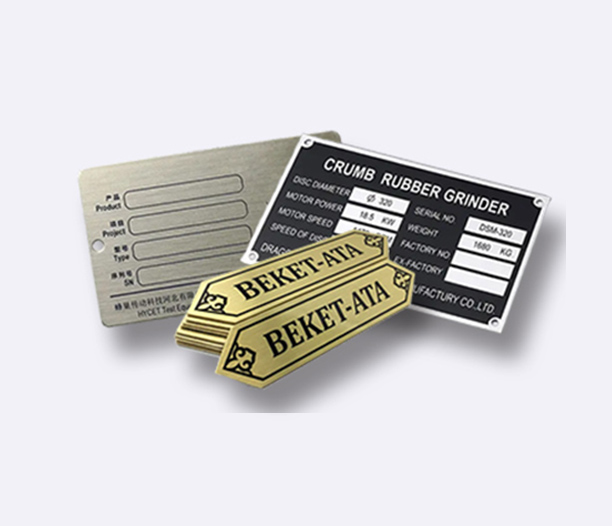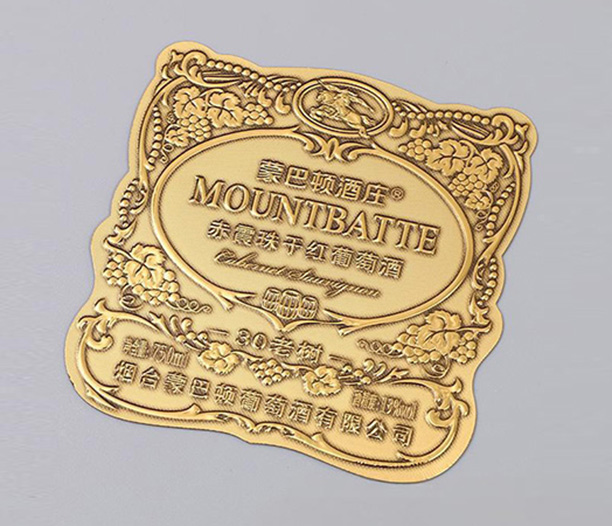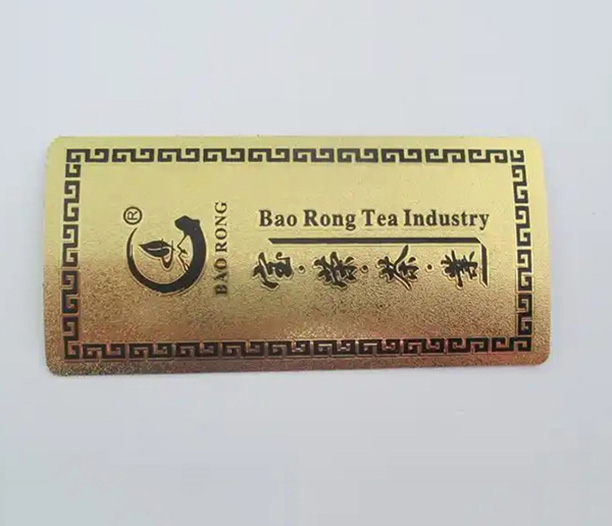Aluminum tags for stamping are one of the most versatile, durable, and widely used identification solutions in the industrial world. From tracking machinery on a factory floor to providing crucial safety information on construction equipment, these small metal plates play an outsized role in organization, safety, and compliance. But what makes them so special, and what should you know before ordering them? This comprehensive guide will delve into the five core advantages of using aluminum tags for stamping and answer the most frequently asked questions to ensure you make the perfect choice for your application.
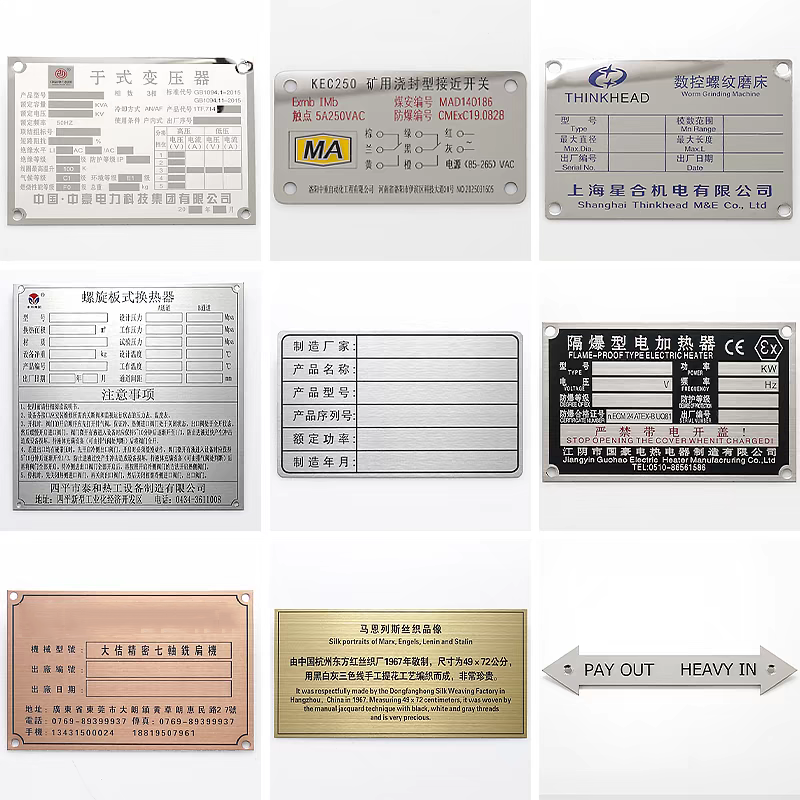
What Are Aluminum Tags for Stamping?
Before we explore their benefits, let's define what we're discussing. Aluminum tags for stamping are blank or pre-marked tags made from aluminum alloy, specifically designed to be permanently marked using a metal stamping process. This process involves using a set of hardened steel stamps (like dies) that are struck with a hammer or pressed with a machine to indent characters, numbers, or logos into the metal's surface. This creates a deep, permanent impression that can withstand harsh environments, ensuring the information remains legible for the life of the asset.
The 5 Unbeatable Advantages of Aluminum Tags for Stamping
1. Exceptional Durability and Longevity
The primary reason industries choose stamped aluminum tags is their incredible resilience. Aluminum is naturally corrosion-resistant, forming a protective oxide layer when exposed to the elements. This makes it ideal for both indoor and outdoor use, resisting rust, moisture, UV exposure, and many chemicals.
The stamping process itself enhances this durability. Unlike ink or paint that can fade, chip, or peel, the stamped impression is a physical deformation of the metal. Even if the surface gets scratched, scuffed, or painted over, the indented information remains, as it is part of the tag's structure. This guarantees that your asset identification, serial numbers, and safety warnings will be readable for decades.
2. Superior Legibility and Permanent Marking
When information is critical, its clarity is non-negotiable. Metal stamped aluminum tags offer unparalleled, high-contrast legibility. The deep impressions created by the stamps are easy to read by eye and, crucially, by automated scanning systems. For added contrast, many users apply a fill paint (like black or white enamel) into the stamped characters. The excess is wiped away, leaving paint only in the grooves, creating a crisp, high-visibility effect against the natural silver aluminum background. This permanence is essential for compliance with industry standards (like OSHA, MIL-STD-130) and for maintaining accurate records over time.
3. Cost-Effectiveness and Efficiency
For businesses requiring large quantities of tags, aluminum tags for stamping present a highly economical solution. Aluminum is an abundant and relatively inexpensive metal, keeping material costs low. Furthermore, the metal stamping process is incredibly fast and efficient once the initial stamping dies are created. This allows for the rapid production of thousands of identical or sequentially numbered tags with minimal per-unit cost. Whether you're using a manual hammer-and-stamp kit for on-the-fly marking in a maintenance shop or ordering pre-stamped tags from a manufacturer for a large project, the overall value is hard to beat.
4. Versatility and Customization
The applications for aluminum nameplates and tags are nearly limitless. They can be manufactured in a vast array of shapes (rectangular, circular, oval, custom), sizes, and thicknesses to suit any need. The stamping process allows for complete customization of the information, including:
Sequential numbering for asset tracking
Unique serial numbers
Company logos (if a custom die is created)
Data plates for equipment specifications
Safety warnings and instructional placards
Additionally, they can be supplied with various finishing options (chemically etched, anodized, painted) and pre-drilled with holes for mounting with screws, rivets, wires, or adhesive backing.
H2: 5. Resistance to High Temperatures and Harsh Environments
Many industrial settings involve extreme conditions that would destroy less robust labels. Stamped aluminum identification tags excel here. Aluminum has a high melting point (approximately 1,221°F or 660°C), meaning it will not melt or warp in high-heat applications like engine compartments, industrial machinery, or aerospace components. Their resistance to solvents, oils, fuels, and acids ensures that information stays intact even in grimy machine shops, chemical processing plants, or automotive garages.
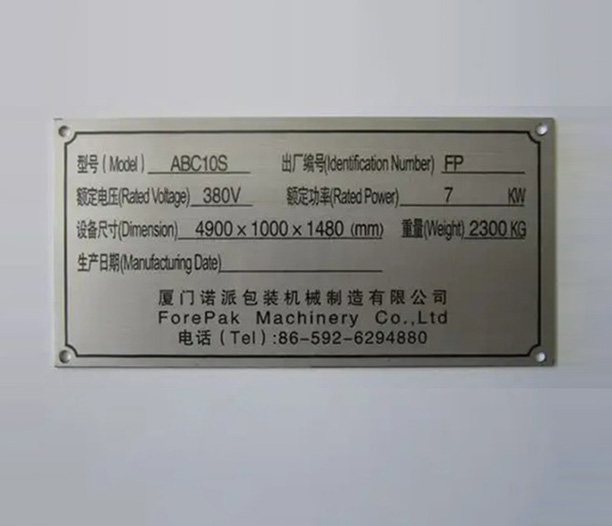
Common Applications for Stamped Aluminum Tags
Asset Tracking: Inventorying tools, IT equipment, and manufacturing machinery.
Equipment Data Plates: Displaying model numbers, serial numbers, voltage, pressure ratings, and manufacturing dates.
Safety and Compliance: Marking valves, electrical panels, and pipelines with critical warnings and specifications.
Aerospace and Defense: Meeting strict MIL-STD-130 requirements for item identification.
Construction and Agriculture: Identifying heavy machinery, parts, and installations exposed to the outdoors.
Petrochemical Industry: Labeling pipes and valves in corrosive environments.
5 Frequently Asked Questions About Aluminum Tags for Stamping
1. What is the difference between stamped and etched aluminum tags?
This is a common point of confusion. Stamping is a mechanical process that uses force to press characters into the metal, creating a deep, tactile impression. Chemical etching uses a corrosive chemical to eat away at the metal's surface, creating marks. Stamping is generally faster for high-volume runs and produces a more durable, deeper mark. Etching is better for complex graphics, finer detail, or thinner gauge materials where stamping might cause deformation.
2. How do I choose the right thickness for my aluminum tag?
The thickness (or gauge) of your aluminum tags for stamping depends on the application:
Thin (0.010" - 0.020"): Best for flat surfaces, indoor use, and adhesive application. Easier to stamp by hand.
Medium (0.025" - 0.040"): A versatile choice for general industrial use. Durable enough for most environments and can be machine-stamped for high clarity.
Thick (0.050" and above): Used for heavy machinery, high-abuse environments, and extreme outdoor exposure. These require powerful industrial stamping machines.
3. Can I stamp these tags myself, or should I order them pre-stamped?
This depends on your volume and needs.
Do-It-Yourself (DIY): Manual metal stamping kits are perfect for low-volume, on-demand marking in a workshop (e.g., for tool rooms). It requires some practice to achieve consistent alignment and impression depth.
Pre-Stamped: For large quantities, sequential numbering, complex layouts, or requiring a professional finish (like filled paint), ordering from a manufacturer is the best choice. They use automated presses that ensure perfect, consistent results every time.
4. What are the options for attaching the tags to my assets?
Stamped aluminum tags offer numerous mounting solutions:
Holes: The most common method. Tags can be pre-drilled with standard or custom hole patterns for screws, rivets, bolts, or zip ties.
Wire: Small holes can be used to secure the tag with a sturdy aluminum wire.
Adhesive: High-strength industrial adhesive backings (like 3M VHB tape) provide a strong, permanent bond to clean, smooth surfaces.
Welding or Riveting: For a permanent, tamper-proof solution on metal equipment.
5. How do I ensure the stamped information remains readable over time?
While the stamping itself is permanent, you can take extra steps to enhance and protect legibility:
Paint Filling: As mentioned, filling the stamped characters with a contrasting enamel paint drastically improves visual contrast and readability from a distance.
Protective Coating: Applying a clear coat or anodizing the tag after stamping can protect the surface from oxidation and abrasion, keeping the background clean and making the impressions stand out.
Anodization: This electrochemical process creates an extremely hard, durable, and corrosion-resistant surface layer. Anodized aluminum tags are among the most durable options available.
Aluminum tags for stamping are a timeless, reliable, and cost-effective solution for permanent identification. Their unique combination of durability, legibility, and versatility makes them indispensable across countless industries. Whether you need to track assets, ensure safety compliance, or provide critical data, understanding these five key benefits and common questions will empower you to select and use the perfect stamped aluminum tag for your specific needs, guaranteeing that your message stands the test of time.



